What is low back pain and how can you strengthen your back to avoid it and the pain of its symptoms? Follow these daily exercises.
Lower back pain is a common cause for visits to the doctor. Actually called ‘low back pain’, it is the most common cause of job-related disability. This article will help you understand what low back pain is, what causes it and what you can do to help strengthen your back — including exercises.
What is low back pain?
- Low back pain (often called ‘lower back pain’) has a number of symptoms which can — but don’t always — include:
- Dull aches or pains in the low back (lumbar spine)
- Stinging, burning pain
- Numbness or tingling
- Muscle spasms and tightness
- Pain that gets worse after prolonged periods of sitting or standing
- Difficulty or pain going from standing to sitting
- These can often manifest or travel to the pelvis and hips as well.
Read our article on what causes low back pain here.
What can you do to strengthen your back?
By strengthening your back, you can reduce the symptoms and suffering of low back pain. There are various ways to do it, for example:
- Strengthen your core muscles (which include your pelvic floor muscles, transversus abdominis and internal and external obliques)
- Stay active! Aerobic exercise and limited bed rest for back pain are important
- Lift weights. This doesn’t necessarily need to be hours of dead weights in the gym, a few specific exercises with small weights at home can help strengthen your back over time
- Maintain good posture
- Improve your flexibility
- Avoid back braces as these don’t help to strengthen your back but can mean your back starts to rely on it.
Pilates, yoga, meditation and other relaxation techniques can also help to reduce pain and strengthen your core. Yoga helps increase muscle strength in specific muscle groups and does so by keeping the body in positions. Stretching with yoga also increases blood flow, promoting nutrient flow round the body helping to flush out toxins and nourish the muscles and soft tissues in the lower back.
12 exercises to strengthen your back
- Bottom-to-heel stretch
Kneel on all fours while trying to keep your back and neck straight but don’t lock your elbows. Slowly move your bottom backwards to meet your heels. Hold the stretch for a deep breath and return to the starting position. Repeat 10 times.


- Cat and dog stretch
Kneel on all fours and arch your back upwards while dropping your chin to your chest. Then drop your stomach and lift your head up tilting your pelvis as you do so. Repeat 10 times.


- Child’s pose
Sit back on your heels with your arms stretched forwards, head and palms down. Work your hands as far away from you as you can, using your fingers to pull your hands along. Now take a deep breath in and out.

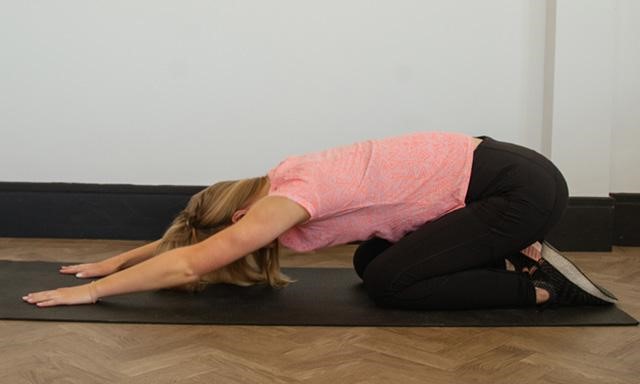
Then do this to each side. Turn to your right and place your hands flat on the ground. Reach again, breathe again. Then turn to your left and do the same.
- Lying knee hug
Lie on your back. Lift your shoulder blades off the ground. Clasp your hands on your right knee and pull it towards your chest. Now swap legs. Repeat 10 times.


- Bird dog
Kneel on all fours with your hands under your shoulders and your knees under your hips. Stretch your left leg and right arm so they are as horizontal as you can get them, in line with your back. Hold it for three to five seconds. Then swap, stretching your right leg and left arm. If you can, tense your bottom muscles while stretching.
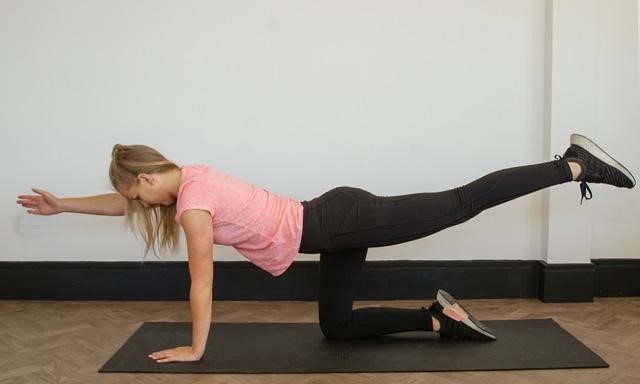

- Plank and feet
Go into a push-up position with your arms extended — not bent. Lift your left foot upwards a few inches and down again. Do the same for the right foot. Remember to keep your back straight. Repeat 10 times.

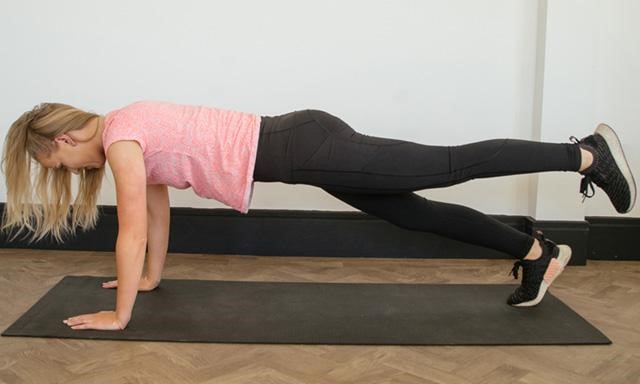
- Kneeling psoas stretch
Go into a lunge, with your left knee on the ground and place your hands on your right knee. Hold your body upright to stretch the front of your left leg. Then swap. Repeat 10 times.
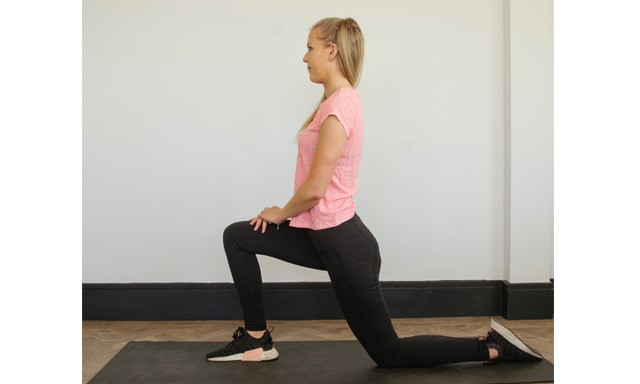
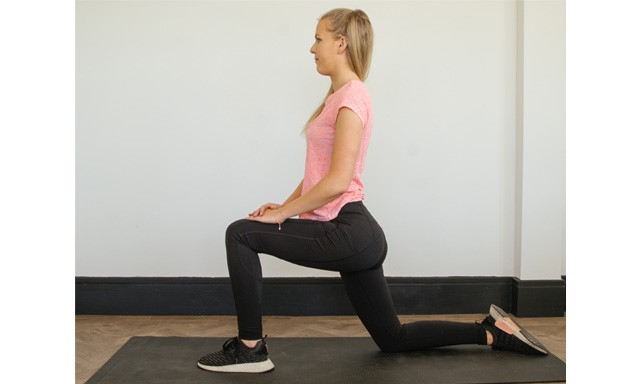
- Back extension
Lie face down on the floor (it can help to place a cushion under your hips). Place your arms by your side. Now lift your head and arms a few inches, hold for a few seconds, then slowly release. Repeat 10 times.
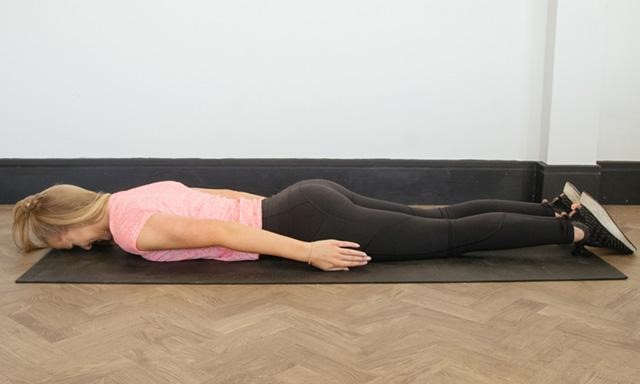
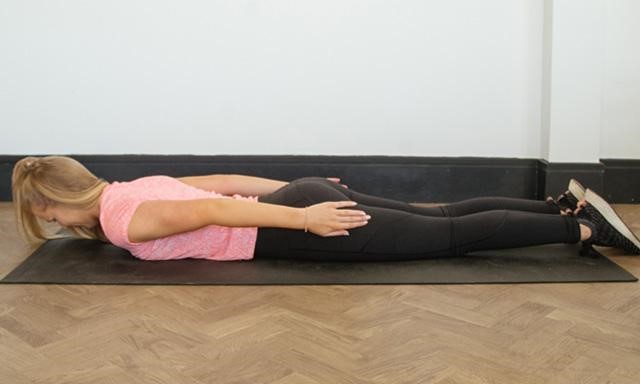
- Pelvic tilts
Sit on the edge of a chair or bench and slowly rock your pelvis forwards, and then backwards. Do this for 30 seconds.

- Piriformis stretch
Sit in a chair and place your right ankle on your left leg. Press down gently on your right knee while holding your ankle with the other hand to stop it sliding. Now sit up tall, then lean forwards. Hold for 30 seconds and slowly sit back. Now repeat for the other leg.
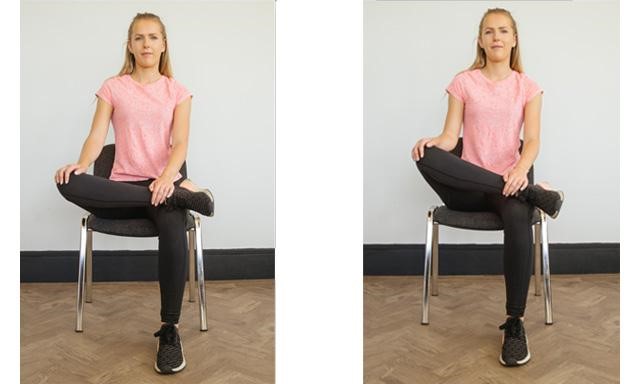
- The bridge
Lie on your back with your knees raised and your feet flat to the floor. Allow the natural curvature of your back to remain — don’t make your back flat to the floor. Now lift your hips upwards, tilting your pelvis as you go. When your body and legs are in a straight line, hold for ten seconds.
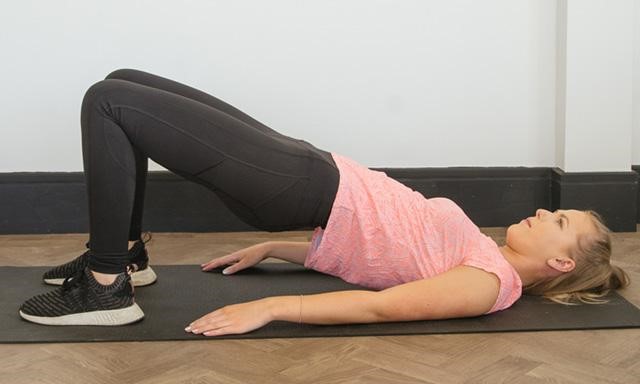

- Lying lateral leg lifts
Lie on your side (a towel or flat cushion to fill the gap between your tummy and the floor can help). If you can, do this exercise with your back to a wall and place your lower foot flat against the wall. Keep a slight forward tilt of the pelvis and use your hand to stop you from rocking forwards. Breathe in, and, as you breathe out, lift your uppermost leg. Ensure you do not twist your foot to point upwards.


3 Exercises to avoid
While exercise and stretches can be effective at strengthening your back and even relieving some of the pain, other exercises can be damaging. Avoid:
- Toe touches
- Sit-ups
- Leg lifts
What can you do to relieve lower back pain now?
When we’re in pain, we often reach for the painkillers, but this is treating symptoms and ignoring the root cause. If you’re suffering from low back pain follow this simple advice for relief.
- Exercise
Take some light exercise such as a brisk walk, yoga or water exercises
- Use hot and cold
Ice packs can help to reduce pain if you have strained your back and heat can help to relieve stiff and achy muscles
- Stretch
Try the stretches above
- See a doctor
While you can often treat back pain with home remedies and treatment, if symptoms persist you may need to seek medical attention. A doctor will be able to diagnose chronic or severe back pain or refer you to a specialist for physical therapy, medication or other treatments.
Read more about tackling musculoskeletal disorders and low back pain here.

 0335764825
0335764825

